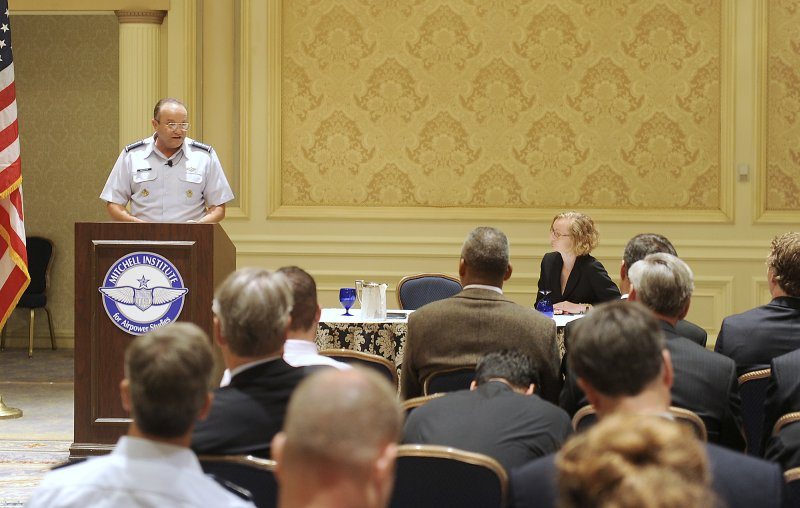Air Force Vice Chief of Staff Gen. Phil Breedlove discussed the Air Force’s enduring capabilities, the Air-Sea Battle concept and the Long Range Strike family of systems at a Mitchell Institute for Air Power Studies event here July 20.
Speaking to members of the Department of Defense, international community and industry leaders, General Breedlove said that in order to meet both budgetary and modernization goals, the Air Force must focus on the distinctive capabilities that the service brings to the fight.
“If we are to survive this period and come out of it with an Air Force that America’s people will recognize in ten years, we’re going to have to focus on those core, distinctive Air Force missions,” General Breedlove said.
The general referenced Air Force Chief of Staff Gen. Norton Schwartz’s 2011 CSAF Vector, outlining these distinctive capabilities as: establishing and exploiting control in air, space, and cyberspace; holding any target on the globe at risk; responsive, full-spectrum intelligence, surveillance and reconnaissance; rapid logistics; and superior command and control.
While the Air Force remains the world’s preeminent air and space power, the U.S. military succeeds or fails as a joint team, General Breedlove said.
As such, the Departments of the Air Force and Navy are currently developing the Air-Sea Battle concept, he said. This operational concept describes a unified approach to address the evolving Anti-Access/Area Denial environment, in which adversaries seek asymmetric ways of opposing the movement of U.S. military forces into their region.
“Our nation’s Air Force and our nation’s Navy, with the Marines, have some very unique, global applications,” General Breedlove said. “We will succeed or fail in the A2/AD environment as a joint team with our naval brethren.”
One of the conclusions that emerged from the service’s Air-Sea Battle discussions was the continuing need for long-range strike capability, the general said. To that end, the Air Force is working with the DOD to develop and refine its concept of a Long Range Strike family of systems.
These systems will include strike; intelligence, surveillance and reconnaissance; and electronic attack capabilities, among others, he said.
“Central to the family of systems is the acquisition of a long-range, penetrating bomber,” General Breedlove said. “”The bomber will not be an exquisite, lone-wolf platform capable of accomplishing all the missions by itself. Rather, it will be a part of that entire family of systems, relying on other capabilities, as well as its own, to accomplish its mission.”
The Air Force estimates it will need 80 to 100 Long Range Strike bombers to meet future needs, and affordability is a key parameter, according to General Breedlove.
“The Long Range Strike bomber will be designed and developed using proven technologies,” he said. “We don’t want to lean very far forward; we need to be able to afford this system.”
Budgetary constraints will not only affect how the Air Force and DOD approach the bomber acquisition, but will have to be considered in all of the military activities, General Breedlove said.
“I believe that when we combine the Air Force’s unique, asymmetric contributions to national defense, with the complementary capabilities of our Joint and coalition partners, we will succeed as we have in the past, but we will have to be more frugal as we move forward,” he said.










